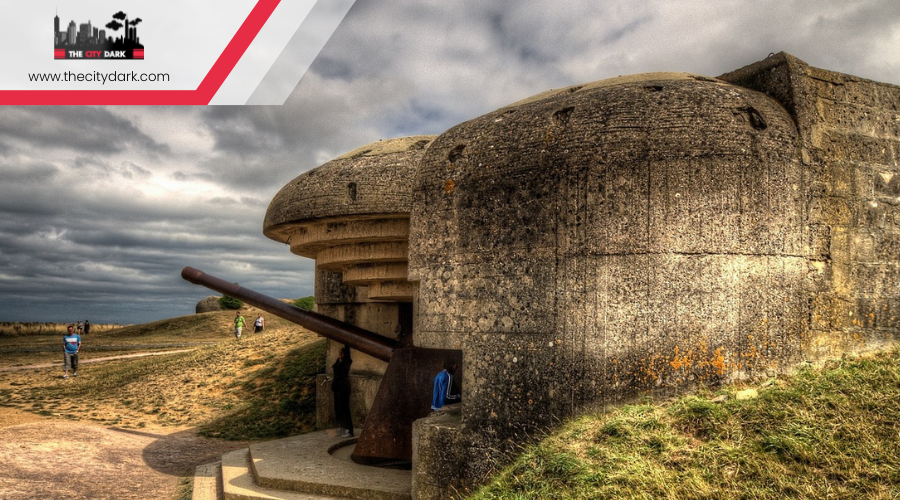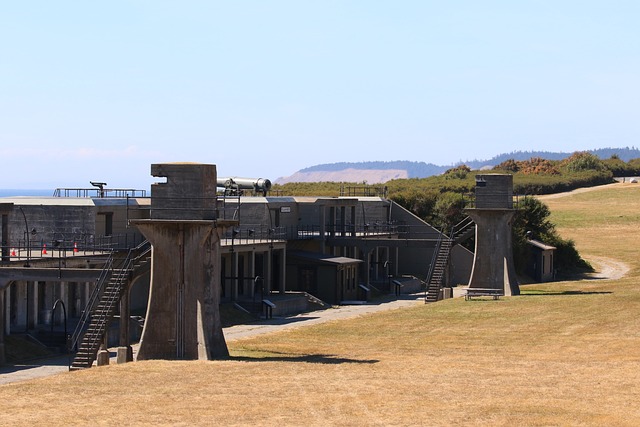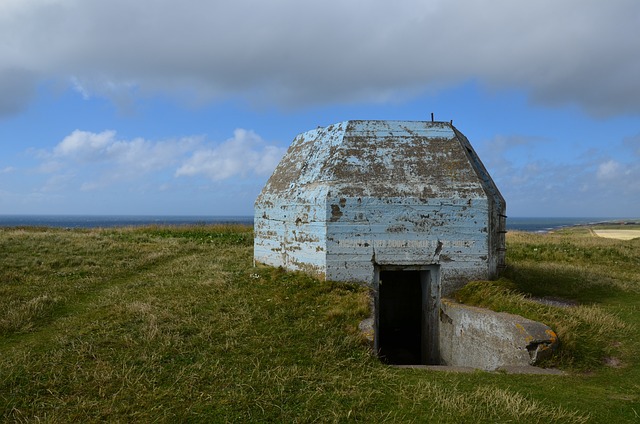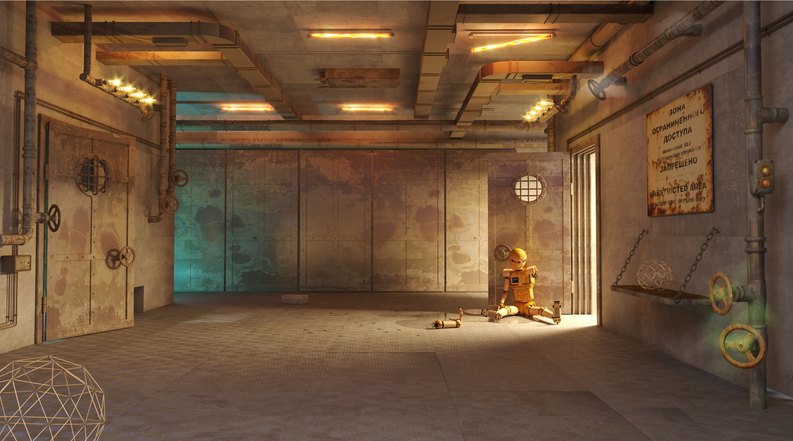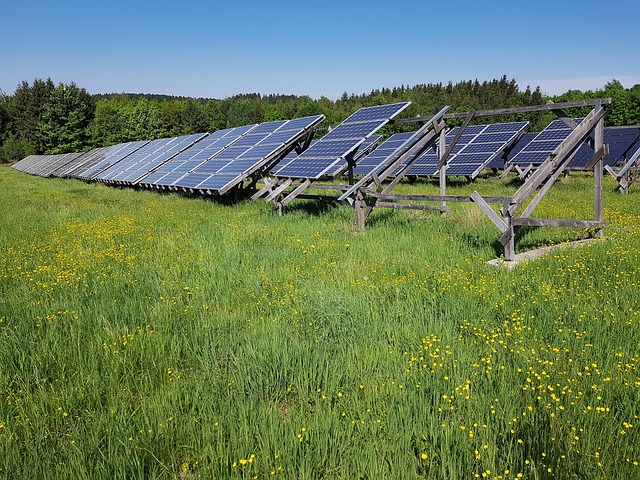In an age where information zips around the globe at the speed of light, the concept of bunkers might seem like a throwback to the Cold War era, yet you’d be surprised at their relevance in today’s world.
As you contemplate the safety bunkers can offer during natural disasters, it’s crucial to consider factors such as construction quality and geographic location. You know that bunkers can serve as a fortress against nuclear fallout or a sanctuary amidst the earth’s tremors, but the devil, as they say, is in the details.
From the necessity of blast doors to the criticality of a robust ventilation system, and not forgetting the potential threat of flooding, there’s a lot you need to weigh. However, before you dismiss or champion the idea of bunkers as the ultimate safe haven, there are several layers and nuances to explore.
What about the other elements of survival, such as sustainable living resources or the intricacies of air filtration technologies? Let’s peel back these layers together, as there is much to uncover about ensuring one’s safety in the unpredictable embrace of Mother Nature.
Key Takeaways
- Bunkers should be strategically located away from large bodies of water and at high elevations to minimize the risk of flooding.
- Bunkers offer robust defense against nuclear blasts and provide immediate shelter during disasters.
- Safe rooms are effective in protecting against tornadoes, hurricanes, and earthquakes, minimizing the risk of injury.
- Bunkers should have comprehensive security systems, including advanced security measures, armed personnel, and surveillance systems, to ensure protection inside the bunker.
Bunker Construction Essentials
To ensure safety during natural disasters, constructing a bunker involves selecting a strategic location, implementing robust security measures, and stocking up on vital supplies.
You’ll want your underground shelter to be positioned away from large bodies of water and at high elevations to minimize the risk of flooding and ensure it remains accessible even in extreme conditions.
Bunker construction essentials also include comprehensive security features. You’re not just preparing for natural disasters but for any potential threats. This means installing built-in security systems and, in some cases, employing armed guards to keep your sanctuary secure.
Moreover, your bunker must be self-sufficient. It’s crucial to have off-grid capabilities with reliable power generators and enough fuel to last through prolonged periods of isolation. Don’t forget about air filtration systems to ensure you have access to clean, breathable air, especially important in scenarios like wildfires or chemical spills.
Lastly, stocking your bunker with long-term food storage, water sources, and medical supplies is non-negotiable. These are the lifelines that will sustain you when external resources are unavailable. Remember, the cost of these amenities can vary widely, so plan according to your budget and needs.
Ideal Bunker Locations
After covering the essentials of bunker construction, let’s explore where you should ideally locate these shelters to maximize safety during natural disasters. The selection of ideal bunker locations is a critical step in ensuring your safety and the longevity of the shelter itself.
Firstly, it’s key to position underground bunkers away from large bodies of water and at higher altitudes. This strategy significantly reduces the risk of flooding and water damage, which are common concerns during natural disasters. For instance, the Vivos Group has smartly situated its bunkers near the Black Hills of South Dakota at an altitude of 3,800 feet, making it an exemplar of strategic placement.
Consider these critical factors when choosing a location:
- Altitude: Higher altitudes minimize flooding risks.
- Distance from Water Bodies: Being far from large bodies of water guards against water damage.
- Self-sufficiency: Ensure the site allows for off-grid living with access to underground power generators and fuel stockpiles.
The Survival Condo Project in Kansas, set in a former missile silo, is another prime example of a secure location. Remember, while the cost and availability of doomsday amenities vary, the importance of location remains constant.
Protection Against Specific Disasters
Understanding the protection that bunkers and safe rooms offer against specific natural disasters can significantly enhance your safety strategy. If you’re worried about severe weather or other catastrophic events, knowing how to protect your family is crucial.
An underground bunker shields those inside from the devastating effects of nuclear blasts, offering a robust defense against one of the most extreme threats.
Similarly, safe rooms, when constructed in line with FEMA guidelines, provide near-absolute protection from tornadoes. These fortified spaces aren’t just effective against twisters; they’re also your safest bet during hurricanes, ensuring you and your loved ones remain safe amidst high winds and flying debris.
Earthquakes pose a unique challenge, yet safe rooms stand out as the safest option for staying protected. Their design and construction help safeguard you from the shakes and tremors, minimizing the risk of injury.
Moreover, an underground bunker provides immediate shelter during the initial disaster and underpressure, acting as a haven until it’s safe to emerge. By investing in these protective measures, you’re taking a significant step towards ensuring the safety and well-being of your family against a variety of natural disasters.
Security and Surveillance Systems
Incorporating security and surveillance systems in bunkers significantly enhances your safety against external threats. These systems aren’t just about fancy gadgets; they’re a critical layer of protection, ensuring that your safe room remains secure against any possible danger lurking outside.
The importance of such systems can’t be overstated. Here are three key reasons:
- Detection: Advanced security systems can scan the surroundings for potential threats, alerting you long before they become a direct danger.
- Deterrence: The mere presence of security measures, like cameras and steel blast doors, can dissuade would-be intruders from attempting to breach your sanctuary.
- Defense: In the unlikely event that a threat does materialize, you’re not left defenseless. Armed security personnel, like those patrolling the grounds of the Survival Condo Project, provide an active layer of protection.
Moreover, the Vivos compounds exemplify the integration of security and surveillance systems with their steel blast doors and security cameras, creating a formidable barrier against external threats. These measures ensure that inside your bunker, you can rest easy, knowing you’re well-protected.
Sustainable Living Resources
Embracing sustainable living resources not only ensures your bunker’s resilience but also contributes to a greener planet. By integrating renewable energy sources like solar, wind, and hydroelectric power into your underground shelters, you’re not just keeping your space safe; you’re also tapping into endless supplies of clean energy. These sustainable living resources offer a lifeline that’s not reliant on the traditional, and often vulnerable, power grid.
Moreover, adopting practices such as recycling, composting, and repurposing materials significantly reduces waste, making your bunker an eco-friendly haven. It’s about creating a self-sustaining environment that safeguards you and the planet. Opting for organic and locally sourced food not only minimizes your carbon footprint but also supports local communities, ensuring you have access to fresh, nutritious supplies in times of need.
The focus on conservation and preservation of natural resources underlines the commitment to safeguarding the earth for future generations. In essence, by prioritizing sustainable living resources in your underground shelters, you’re not just preparing for natural disasters; you’re also playing a vital role in the preservation of our planet. It’s a safe, responsible choice that benefits everyone.
Medical and Emergency Supplies
Stocking up on medical and emergency supplies is crucial for ensuring your bunker’s safety and self-sufficiency during natural disasters. Underground shelters not only provide protection from the physical impacts of such events but also necessitate a well-thought-out plan to stay safe and healthy internally. Ensuring you have a comprehensive medical kit and a sustainable source of fresh water can make all the difference.
Vivos bunkers, for example, have taken steps to ensure that residents have access to their personal medications by asking them to send these in advance. This preparation is vital for maintaining health over extended periods underground. Moreover, the ability to screen for contaminants and viruses is an added layer of security in these controlled environments.
Here are three essential components to consider for your bunker:
- Basic medical supplies and prescription drugs: To handle immediate health issues and maintain chronic conditions.
- Renewable water sources: Some compounds tap into underground wells, ensuring a continuous supply of fresh water.
- Long-term food supplies: High-end shelters stock freeze-dried food, capable of sustaining residents for years, complementing the medical supplies by ensuring nutritional needs are met.
Off-Grid Energy Solutions
After ensuring your bunker is stocked with medical and emergency supplies, it’s crucial to consider how you’ll power it independently through off-grid energy solutions. These solutions provide self-sufficient power sources, ensuring you’re not reliant on the traditional electrical grids, which may be vulnerable during natural disasters.
| Solution | Benefits | Considerations |
|---|---|---|
| Solar Panels | Renewable energy source, reduces air pollution | Initial cost, requires sunlight |
| Wind Turbines | Sustainable, minimal operating costs | Requires space, dependent on wind |
| Generators | Reliable, can power large systems | Needs fuel, potential for air pollution |
Implementing off-grid energy solutions like solar panels or wind turbines not only secures your underground power needs but also contributes to environmental sustainability. These systems often include battery storage to ensure excess energy generated during high production periods is available when needed most. This approach not only provides power in remote areas or during grid failures but also significantly reduces your reliance on fossil fuels and minimizes air pollution. By embracing these off-grid energy solutions, you’re taking a significant step toward ensuring your bunker is fully prepared and environmentally responsible.
Air Filtration Technologies
Ensuring your bunker’s air remains breathable during emergencies hinges on the implementation of sophisticated air filtration technologies. These systems aren’t just add-ons; they’re essential for maintaining life-supporting conditions within underground shelters and Safe Rooms. The effectiveness of these technologies can mean the difference between a secure refuge and a hazardous enclosure.
Air filtration technologies in bunkers serve three critical purposes:
- Removing Harmful Particles: Advanced systems can filter out pollutants, toxins, and other harmful particles, ensuring the air you breathe is clean.
- Protection Against Severe Threats: They provide a shield against nuclear fallout and chemical/biological contaminants by purifying the air from these specific dangers.
- Independence from External Power: Designed to operate autonomously, these systems ensure a continuous supply of clean air, even when external power sources are compromised.
Bunkers equipped with high-quality air filtration technologies offer a safe haven, capable of sustaining life for extended periods, regardless of the air quality outside. By purifying the air of various pollutants and threats, these systems create a habitable environment, ensuring you’re not just surviving, but thriving in your underground shelter or Safe Room during emergencies.
Conclusion
In conclusion, you’ve learned that a well-constructed bunker, situated in an ideal location, can be your safe haven during natural disasters. Whether it’s withstanding nuclear blasts or earthquakes, the right design, including blast doors and secure ventilation, is crucial.
Don’t forget the importance of security systems, sustainable resources, medical supplies, off-grid energy, and air filtration technologies. With these in place, you’re setting up a resilient shelter that not only keeps you safe but ensures you thrive during emergencies.

